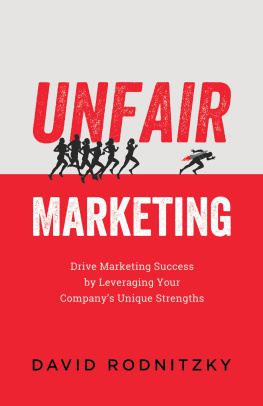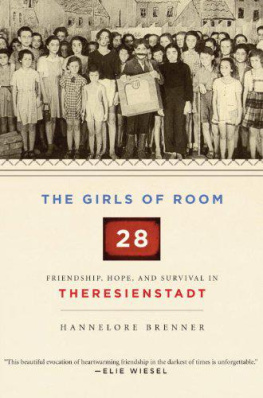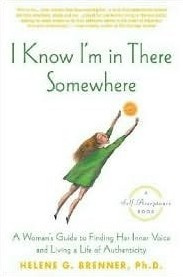Copyright 1998 by Wayne State University Press, Detroit, Michigan 48201.
All material in this work, except as identified below, is licensed under a Creative Commons Attribution-NonCommercial 3.0 United States License. To view a copy of this license, visit https://creativecommons.org/licenses/by-nc/3.0/us/.
All material not licensed under a Creative Commons license is all rights reserved. Permission must be obtained from the copyright owner to use this material.
The publication of this volume in a freely accessible digital format has been made possible by a major grant from the National Endowment for the Humanities and the Mellon Foundation through their Humanities Open Book Program.
Library of Congress Cataloging-in-Publication Data
Brenner, David A., 1964
Marketing identities : the invention of Jewish ethnicity in Ost und West / David A. Brenner.
p. cm.
Includes bibliographical references and index.
Paperback ISBN: 978-0-8143-4519-1; ebook ISBN: 978-0-8143-4518-4
1. JewsGermanyIntellectual life. 2. Jews, East EuropeanGermanyIntellectual life. 3. Jews, East EuropeanGermanyPublic opinion. 4. Public opinionJews. 5. Ost und West (Berlin, Germany : 1901) 6. GermanyEthnic relations. I. Title.
DS135.G33B736 1998
943'.155004924dc21 97-50452
Cover:
Leo Winz (lower right) and others on
the Kaiser Wilhelm II steamer
of Norddeutscher Lloyd
( Ost und West [October 1908]: 6056);
cover of Ost und West between
1901 and 1906.
http://wsupress.wayne.edu/
A CKNOWLEDGMENTS
This book originated in 198990 as Eastern Europe was disintegrating and with it the German Democratic Republic. To reflect on East-West issues and the imagining of communities and nationseven in turn-of-the-century Jewish contextsappeared utterly unavoidable. Later, in 199091, the Federal Republic of Germany served as my base. As I began dissertating there, the inhabitantscharacterized as Ossis/Wessis were confronting and crossing boundaries that seemed prefigured in the discursive universe that was Ost und West . The predicament of the Wall within the head not only was reminiscent of the two (pre-Holocaust) European Jewries, but it also raised the question, more urgently than ever, of the Germanies, of their inventions, ethnicities, and self-stereotyping. This study also came to fruition during the election campaigns of 199192 in the United States and the ensuing analysis of sound bites, political rhetoric, and the mass media that they provoked. What follows, then, is itself history and a commentarythrough a glass darkly, as it wereon those years. In that sense (and others), all responsibility for its contents is my own.
It would be difficult to thank everyone who made Marketing Identities possible. My doctoral committee, for starters, deserves special mention. Under the tutelage of my advisers, John M. Hoberman and Janet K. Swaffar, the dissertation achieved its completion in August 1993. It was John who first inspired me to come to the University of Texas and who has helped me overcome lapses into a cumbersome, jargony style. Janet showed an interest in my development at an early stage of my Austin sojourn, encouraging me at every step in the writing process and never letting me forget my obligations to pedagogy and the profession. Katherine Arens critiqued (too) many drafts of the dissertation and returned them all with superhuman alacrity. By a twist of fate, Kirsten Belgum was also researching journals and nationalism; this study reflects her insights into methodology. Seth Wolitz first brought my attention to the extensive holdings of Ost und West at the Harry Ransom Center, and he graciously permitted me to mine his inexhaustible knowledge of Jewish cultures and their history.
Other teachers also proved helpful. Hans Otto Horch in Aachen generously hosted my initial year of Ph.D. research there and warrants credit for being the pioneer in the field of German-Jewish periodical studies. Walter Wetzels, Robert King, Peter Hess, David Price, and Mark Louden all offered advice in Austin. At the postdoctoral stage, I am grateful for the insights of Sander Gilman, David Sorkin, and Michael Brennerall of whom commented on earlier drafts of the manuscriptnot to speak of the two anonymous readers of Wayne State University Press. Thanks also go to Marion Kaplan, who critiqued an early version of . Arthur Evans, director of the press, has always been obliging and accommodating. His editorial and production staffJennifer Backer, Meg Humes, and Alice Nigoghosian, and copy editor Wendy Warren Keeblermade an attractive spectacle out of a word-processed manuscript and a skeletal list of illustrations.
At the University of Colorado, William Safran and many others critiqued my work and offered support. I have left until last one colleague who offered invaluable help as he struggled with similar issues of German and Jewish cultural history. Michael Berkowitz, despite his busy schedule, was a gentle reader and source of constant support, always taking time for seemingly endless E-mail inquiries.
It is my pleasure finally to thank those institutions that provided generous grants at crucial stages of this project: the German Academic Exchange Service (DAAD) and the Alexander von Humboldt Foundation. I also received assistance and hospitality at the following libraries and archives: the Leo Baeck Institute (New York), the Humanities Research Center (Austin), the YIVO Institute for Jewish Research (New York), the Central Zionist Archives (Jerusalem), the Germania Judaica (Cologne), the Alliance Isralite Universelle (Paris), and the Archiv Bibliographia Judaica (Frankfurt a.M). Thanks go especially to Diane Spielman and Michael Heymann. I am also grateful to the staffs of Interlibrary Loan at the University of Texas, the Technische Hochschule Aachen, and the University of Colorado.
Portions of this book have been previously published in earlier forms. Part of appeared as Neglected Womens Texts and Contexts: Vicki Baums Jewish Ghetto Stories, Women in German Yearbook 13 (1997): 10122. I thank the editors and journals for permission to revise and reprint my work.
Without the friendship of several individuals, this work may never have achieved completion. Words are not sufficient to thank my sister Lynn and brother-in-law Jeff, Robert Boone, Jeff Grossman, Achim Jaeger, Itzik Gottesman, the Oppenheims, Stan Taylor and Katie Kelfer, Carol Harvel, Glenn and Ursula Levine, Stephan March, Michael Gumbert, and many, many others. Jeff, Itzik, Achim, and Glenn merit distinction for many stimulating conversations related to questions dealt with in the book.






















